�
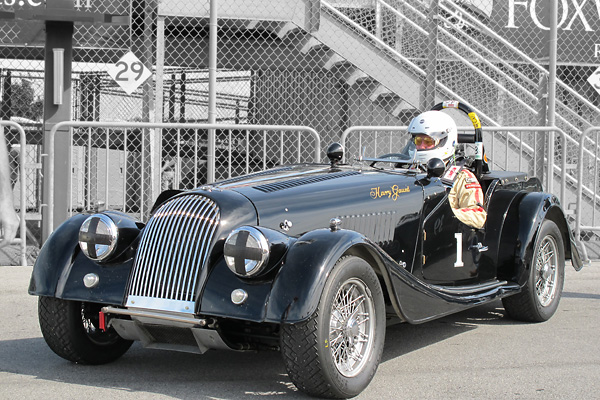
�
Harry Gaunt's 1956 Morgan Plus 4 Racecar
� � Owner: Harry Gaunt� City: Indianapolis, Indiana
� Model: 1956 Morgan Plus 4
� Engine: Triumph TR2 2170cc four-cylinder
� Race prepared by: owner�
�
Morgan Plus 4: from Introduction through the 1950s
��
Morgan introduced their Plus 4 model at the Earl's Court Motor Show in October 1950. Although�
it looked like the already familiar "4/4" model,�
the new Plus 4 body was two inches wider at the doors, six inches wider at the firewall, and�
two inches longer for more driver legroom. Like the 4/4 the new Plus 4 was offered as a two-seater,�
a four-seater, or as a drophead coupe (i.e. a four seat convertible with more rear seat headroom�
and more luggage space in the trunk). Plus 4 styling features evolved through the 1950s.�
Specifically, a variety of radiator grilles and headlight treatments were tried, but generally�
the Plus 4 retained a "pre-war" appearance.�
�
The Plus 4 was both more powerful and smoother riding than its predecessors. The Morgan Motor�
Company still didn't build its own engines. For the Plus 4 they only offered Standard Motor�
Company produced engines, whereas the 4/4 model continued in production for many years with�
Ford engines.�
�
Shortly before the start of Plus 4 production, Standard consolidated their engine production�
to a single specification. Consequently, the Plus 4 was introduced with the 2088cc Standard�
Vanguard engine, rated 68 brake horsepower at 4300rpm. 788 Morgan Plus 4s were built with�
Vanguard engines.�
�
�
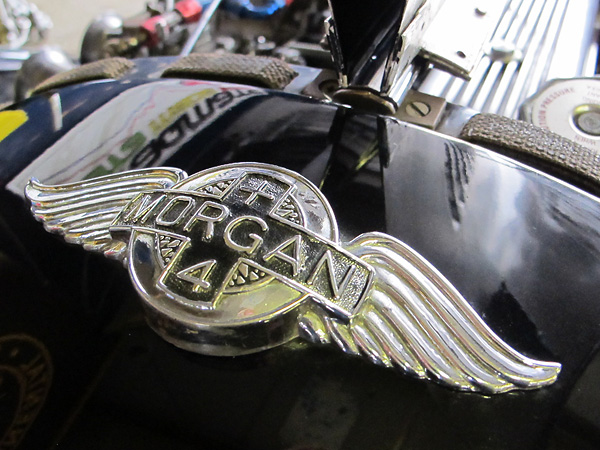
�
�
The Plus 4's front suspension was softer riding than its predecessor due to a change in geometry.�
The sliding pillars were simply angled slightly inward at the top, which made room for longer and softer�
coil springs. One quirky new feature was a foot-operated valve by which the driver could divert�
engine oil to the sliding pillar bushings. Lubricating these bushings was desirable because�
earlier Morgan front suspensions characteristically suffered friction and binding issues, which�
robbed handling and ride quality. The Plus 4 also featured Girling telescopic front shock absorbers�
and hydraulic Girling lever-arm rear shock absorbers. Brakes were hydraulically operated and nine inch�
drum brakes were fitted all around. �
�
When Standard's engine range was extended to support that company's Triumph sports car division,�
Morgan was happy to update their cars accordingly. The new 1991cc Triumph TR2 engine was rated�
90 brake horsepower at 4800rpm.�
�
Harry Gaunt's Plus 4 is one of just 338 produced with the Triumph TR2 engine, which was first offered�
to customers in mid-1954. Technically the TR2 engine was available from Morgan through June 1958, but�
in fact it was made obsolete through concurrent availability of the even more powerful Triumph TR3�
engine. 1795 TR3-powered Plus 4s were built between March 1956 and February 1964. Similarly, Morgan�
gradually phased in Triumph's TR4 engine in the early sixties. The sixties also brought the famous�
Plus 4 Super Sports model, but that's well outside the scope of this article.�
�
�
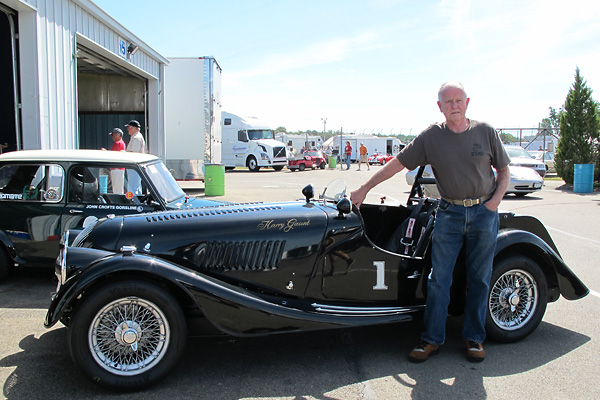
�
Harry Gaunt's 1956 Morgan Plus 4
��
Harry Gaunt bought his Morgan Plus 4 new in 1956, and he began racing it right away. He competed�
in Sports Car Club of America races in 1956, 1957, and 1958.�
�
In the early 1980s, Harry decided to restore his old racecar and to enter it in vintage racing�
events. He has raced it frequently since 1983, and has even taken the Morgan on two trips to�
Europe where he raced at the Nürburgring in Germany and at Circuit Zolder in Belgium.�
Since 1956, Harry has completed 105 races in his trusty Morgan race car.�
�
�
Enjoying this article? www.BritishRaceCar.com is partially funded through generous support from readers like you!
�
To contribute to our operating budget, please click here and follow the instructions.
�
(Suggested contribution is twenty bucks per year. Feel free to give more!)�
Features and Specifications
�| Engine: | �Triumph TR2 four-cylinder engine (2170cc).�
Triumph TR4 cylinder head. �
Ericson camshaft.�
Dual Weber 45DCOE carburetors with long velocity stacks.�
Mallory Unilite distributor.�
Mallory ProMaster ignition coil.�
Oil cooler. | �
| Cooling: | �custom aluminum ductwork around the upgraded oil cooler. | �
| Exhaust: | �custom four-into-one header. | �
| Transmission: | �stock Moss 4-speed. �
Cable operated clutch mechanism.�
Tilton clutch. | �
| Rear Axle: | �stock Salisbury axle housing, with 3.74:1 gears and limited slip differential. | �
| Front Susp.: | �sliding pillar independent front suspension.�
Koni double adjustable aluminum bodied telescoping shock absorbers. | �
| Rear Susp.: | �stock laminated leaf springs.�
Koni double adjustable aluminum bodied telescoping shock absorbers.�
Custom Panhard rod. | �
| Brakes: | �(master) dual Tilton master cylinders with remote reservoirs and remotely adjustable bias bar. � (front) converted to disc brakes, � (rear) stock drum brakes. | �
| Wheels/Tires: | �15x5.50 72-spoke wheels.�
Dunlop Racing "Sportster" (205/60R15) tires. | �
| Electrical: | �gear reduction starter.�
Carquest lead acid battery. | �
| Instruments: | �(left to right) stock Smiths mechanical tachometer (0-6000rpm),�
Smiths water temperature gauge (30-110C),�
stock Smiths four-way gauge (amps, oil pressure, water temp, fuel level),�
Racetech oil temperature gauge (40-140C). | �
| Fuel System: | �ATL 8-gallon fuel cell.�
Holley "Red" fuel pump.�
Holley adjustable fuel pressure regulator. | �
| Safety Eqmt: | �Simpson five-point cam-lock safety harness.�
Simpson Race Products centralized fire suppression system. | �
| Body & Interior: | �aluminum fenders in lieu of the original steel fenders.�
Bonnet modified for carburetor clearance.�
Custom ductwork added around the oil cooler.�
Aero Screen windscreen, in lieu of the original full-width windshield.�
Passenger seat removed.�
Blumel Brothers "Brooklands" four spoke spring-type steering wheel.�
Raydyot style mirrors (three places.) | �
| Weight: | �~1700 pounds. | �
| Performance: | �180hp at 6000rpm. | �
| Racing Class: | �SVRA Group 3, C-Production. | �
 �
�
�
�
Engine Installation
��
�
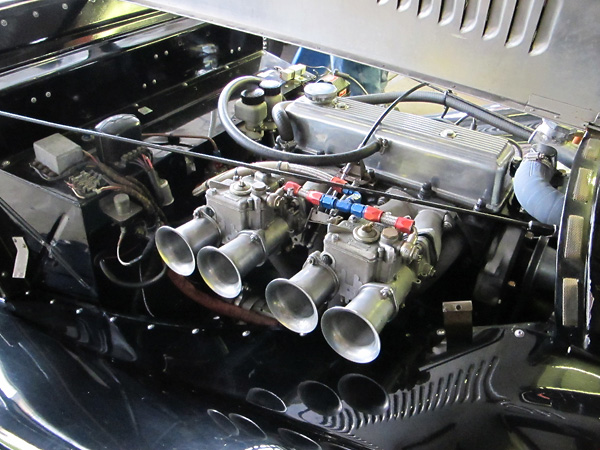
�
Triumph TR2 four-cylinder engine. Earlier Plus 4 Morgans used the less powerful Triumph Vanguard engine.
�
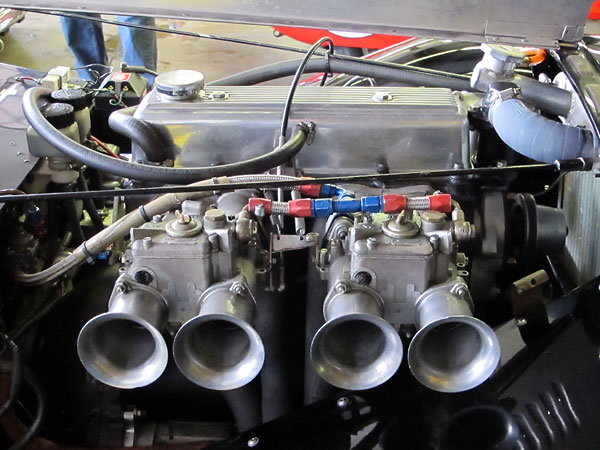
�
This engine is providing about twice the brake horsepower that it made in stock (1956) form. The most
�
obvious upgrade is that it's wearing dual Weber DCOE carburetors in lieu of original S.U. H4 (1.5") carbs.
�
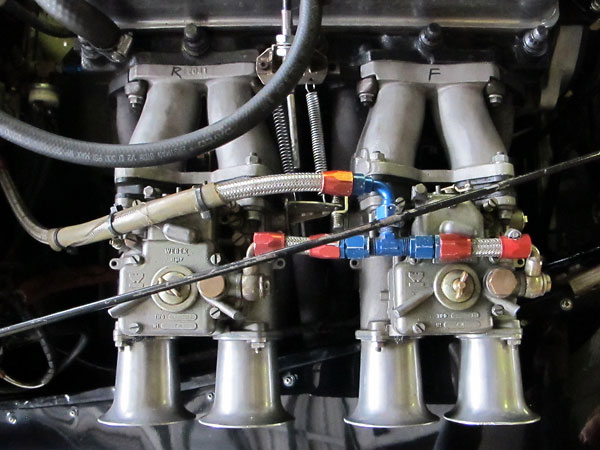
�
Other changes are more subtle, like installation of the better designed Triumph TR4 cylinder head. You
�
can spot the difference if you know where to look. Triumph TR2 heads are "boxy looking" and have their
�
intake ports on a relatively low plane, Triumph changed casting designs for the TR3 model to move the
�
intake ports higher. Note that the (black painted) iron cylinder head generally follows the same contour
�
as the aftermarket intake manifolds, instead of being straight across. You can further tell this is a
�
Triumph TR4 cylinder head by the short flat section over the number-one (right-most) intake port.
�
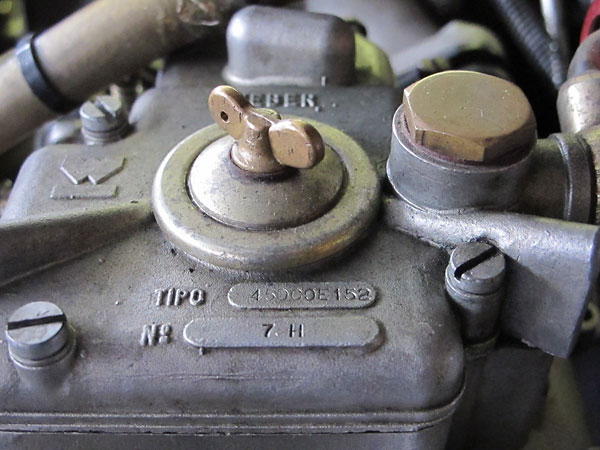
�
Weber carburetor... Tipo: 45DCOE152, No: 7H
�
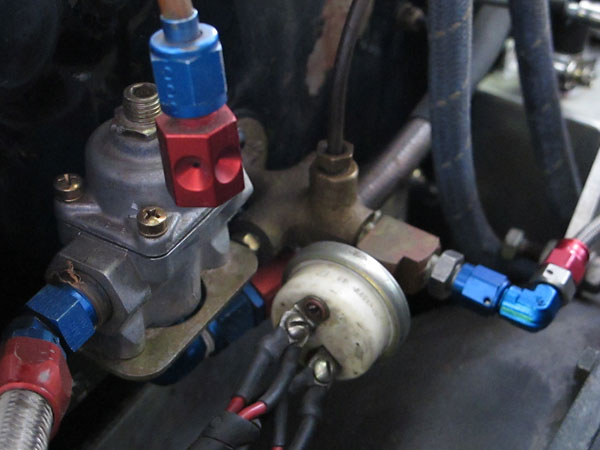
�
(left) Holley adjustable fuel pressure regulator. (top) Fire suppression system nozzle.
�
(center) Oil pressure warning light switch, and the plumbing for an oil pressure gauge.
�
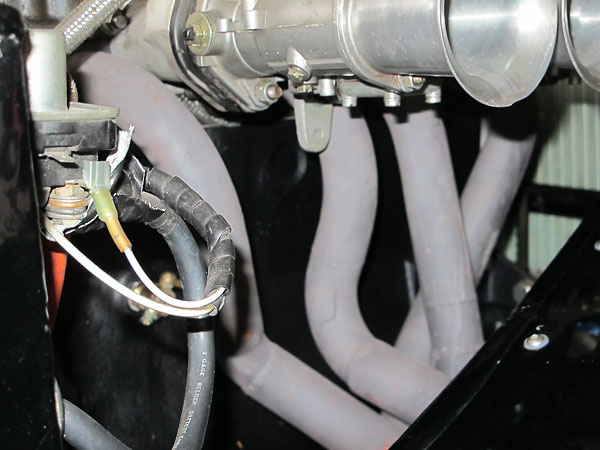
�
Custom four-into-one tubular exhaust header. (Morgan originally used Triumph's cast iron manifold.)
�
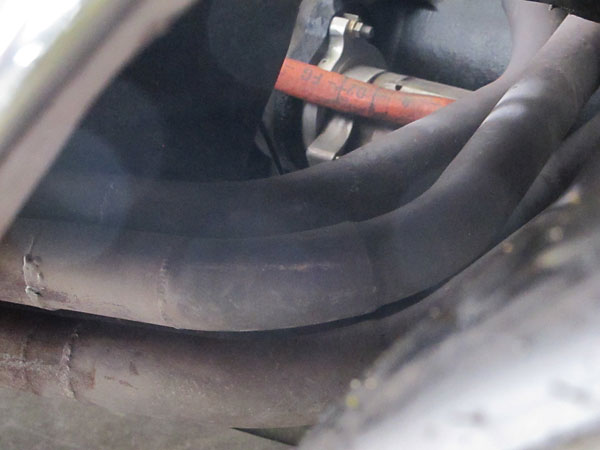
�
These headers feature very long primaries.
�
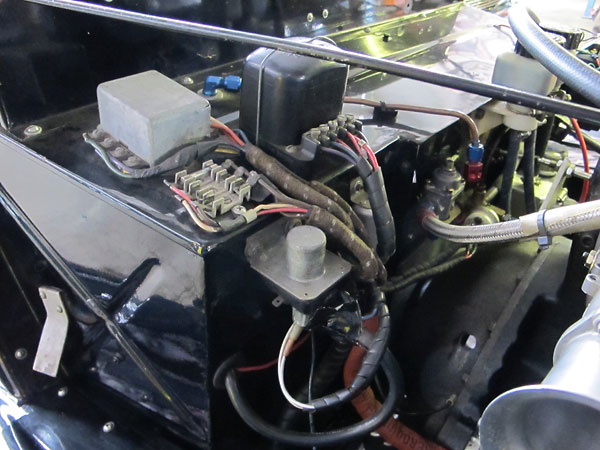
�
Much of the old electrical system is still in place, including the Lucas voltage regulator.
�
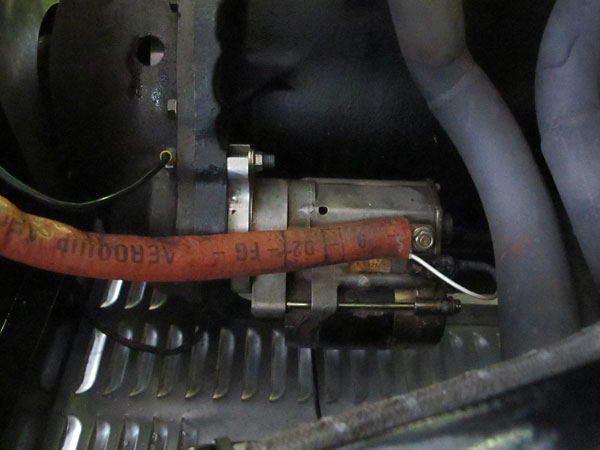
�
Lightweight, high torque, gear reduction starter.
�
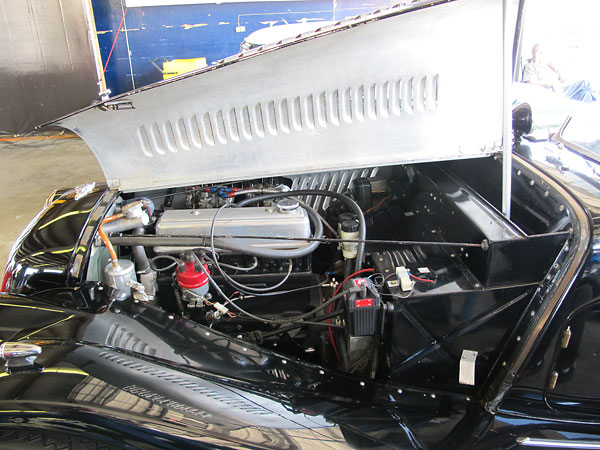
�
Beautifully fabricated aluminum "butterfly" hood.
�
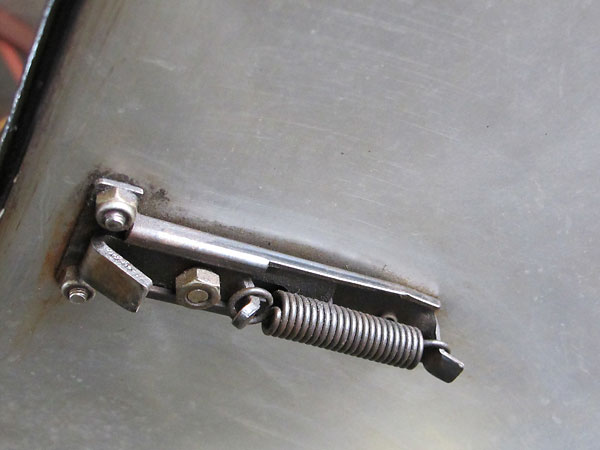
�
Hood latch.
�
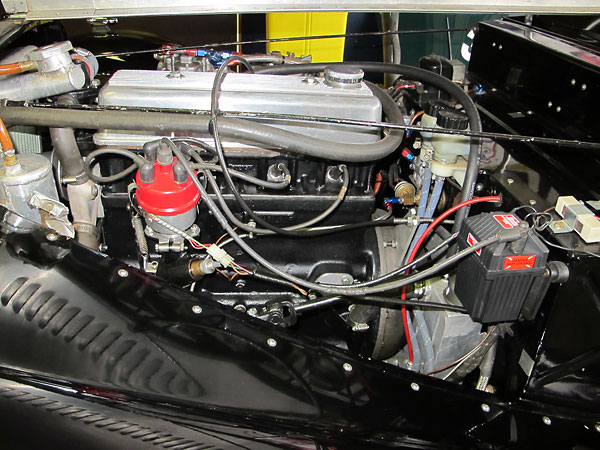
�
Mallory Unilite distributor.
�
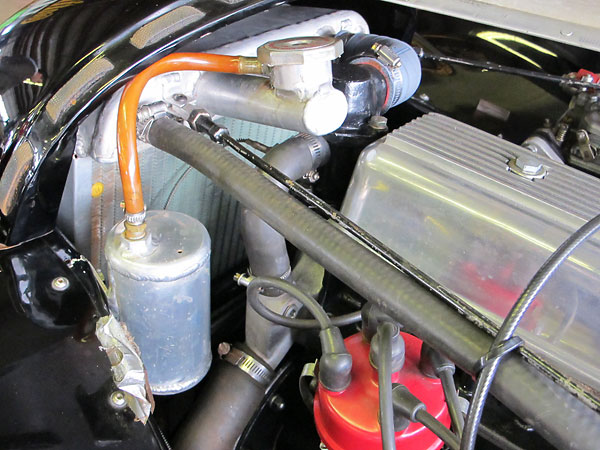
�
Custom aluminum downflow radiator and nifty little aluminum overflow tank.
�
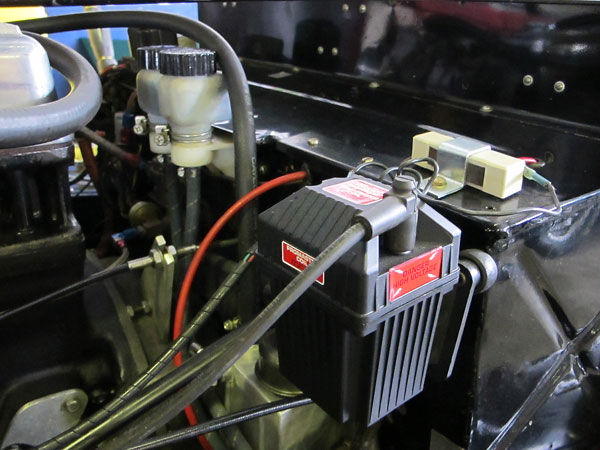
�
Mallory ProMaster ignition coil.
�
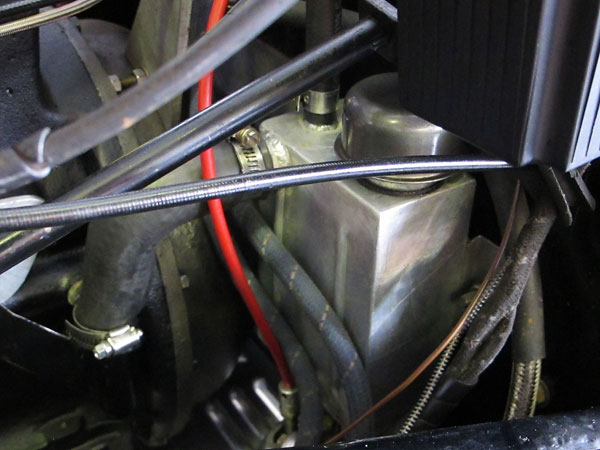
�
Custom fabricated aluminum crankcase breather tank.
�
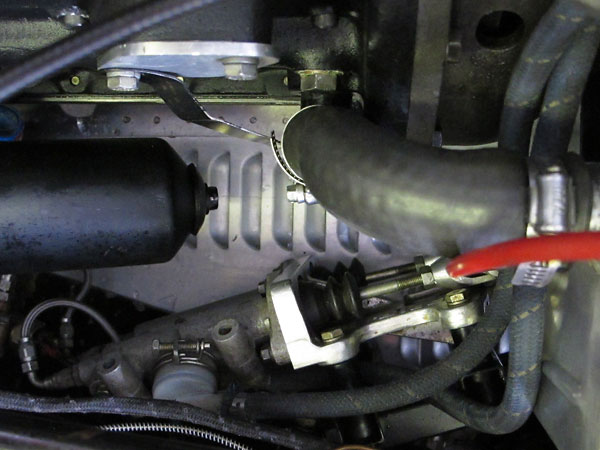
�
Dual Tilton brake master cylinders, with adjustable bias bar.
�
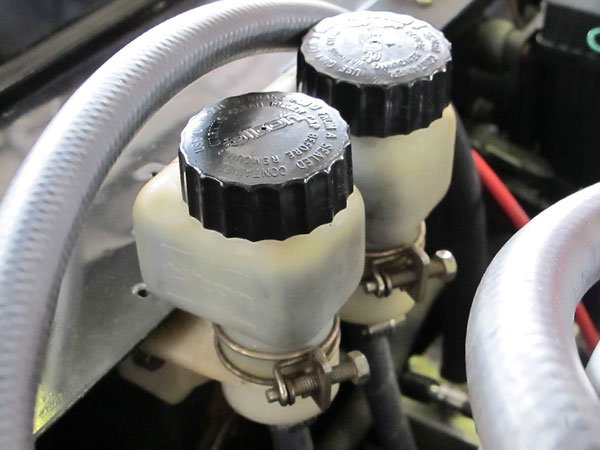
�
Brake fluid reservoirs.
�
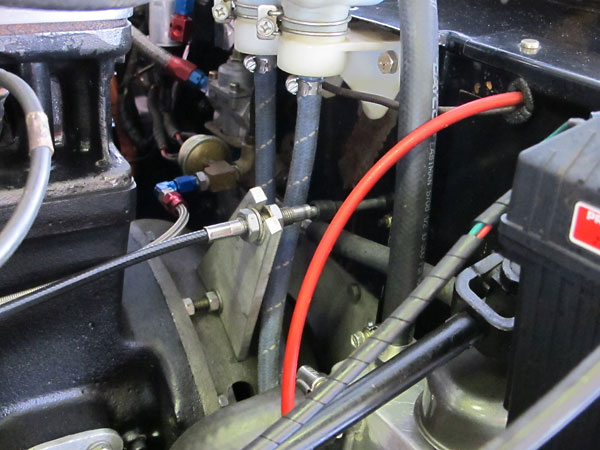
�
The clutch on this car is cable operated.
�
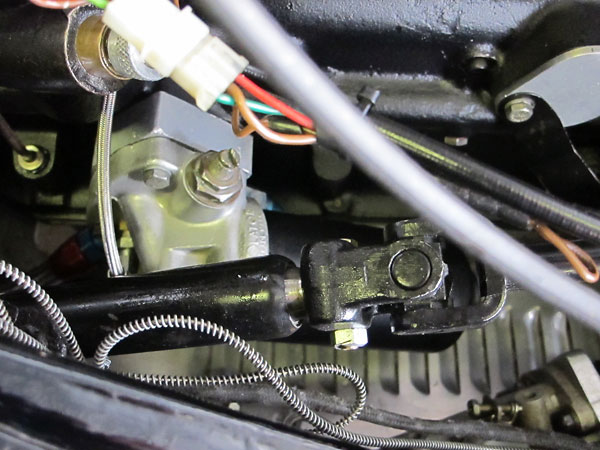
�
Background: oil filter mount and canister. Top: tachometer drive. Bottom: steering universal joint.
�
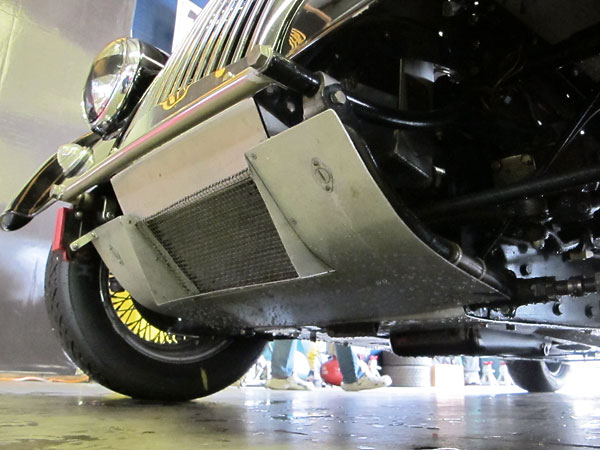
�
Custom aluminum ductwork around the upgraded oil cooler.
�
Front Suspension, etc.
��
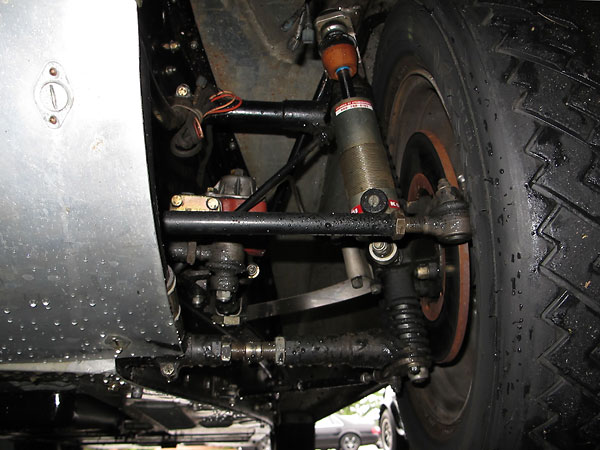
�
Morgans traditionally feature "sliding pillar" front suspensions. In other words, stub axles slide up and down
�
on a vertical shaft. With this style of independent front suspension, roll center is at ground level and wheel
�
camber while cornering is equal to body roll. 1950's vintage Plus 4 cars came with Girling telescopic shock
�
absorbers and 9" drum brakes. This one has been upgraded to Koni shock absorbers and to disc brakes.
�
Rear Suspension
��
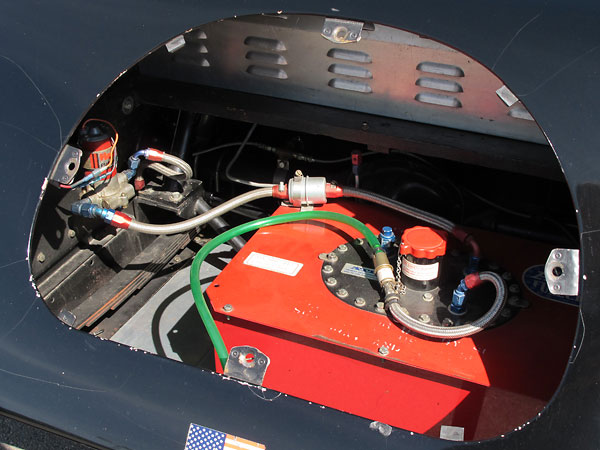
�
Morgan's usual Z-profile frame rails, with leaf springs installed above the lower flange.
�
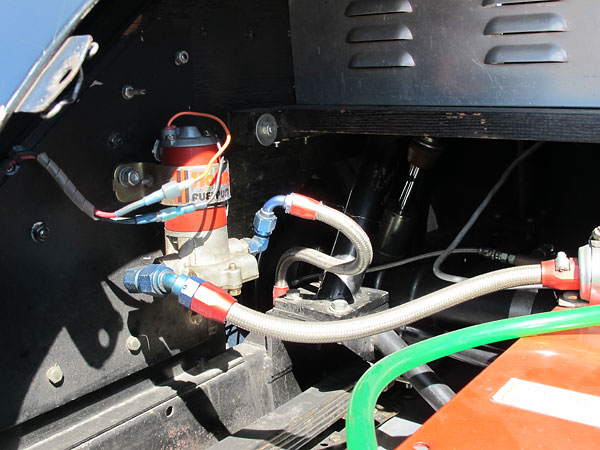
�
Holley "Red" electric fuel pump.
�
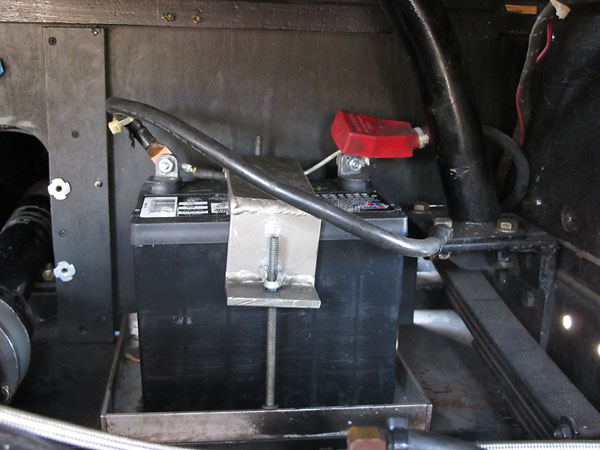
�
This car has been converted to one 12V battery, and from positive to negative ground.
�
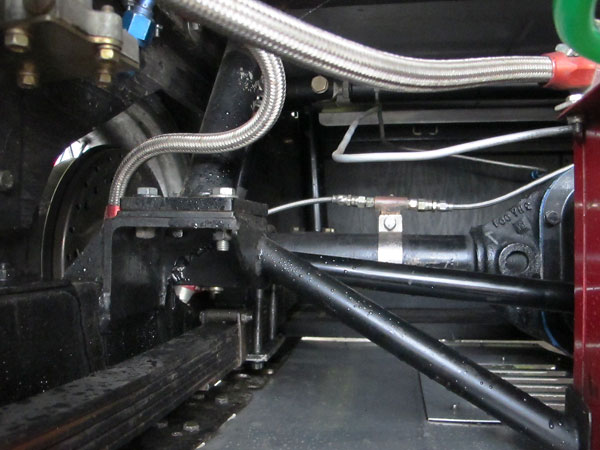
�
The Plus 4 came standard with a robust Salisbury axle and hypoid-bevel gears. This one has been
�
upgraded to a limited slip differential. It utilizes 3.74:1 gears. In the foreground, you can just
�
see that a Panhard rod has been installed although regretably we don't have photos of its mounts.
�
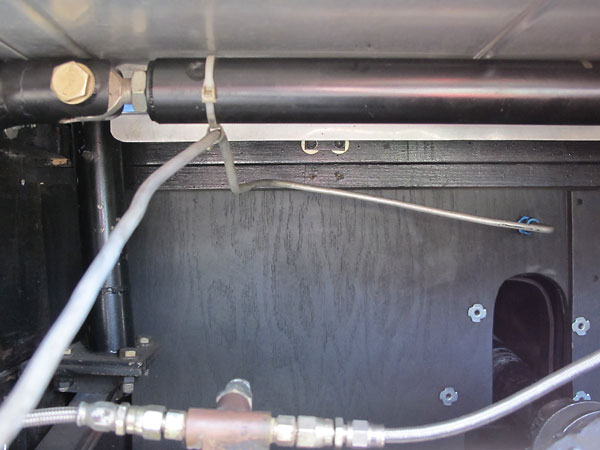
�
Removeable chassis strengthening brace.
�
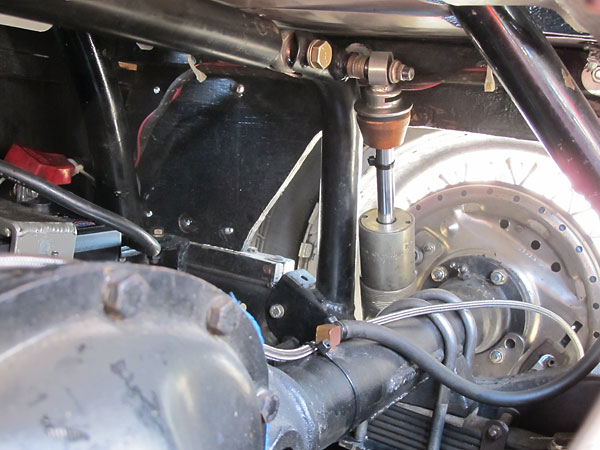
�
Koni double adjustable aluminum bodied telescoping shock absorbers.
�
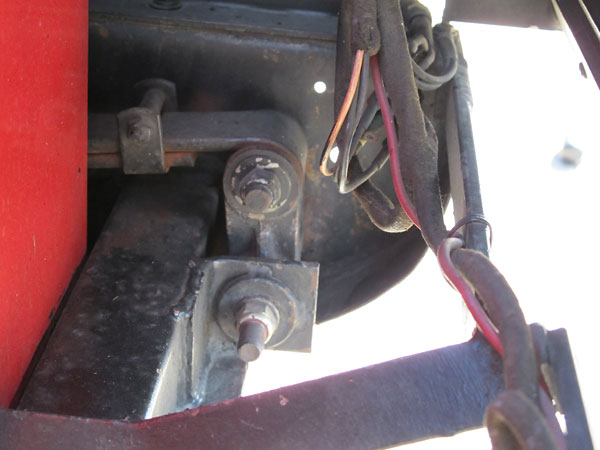
�
Inverted spring shackles were used on the Plus 4, whereas on some earlier Morgan models the leafsprings
�
slide in slots cut into a frame crossmember. (Plus 4 crossmembers were "n" shaped in cross-section and
�
were welded in, whereas the earlier design were tubular fabrications and were bolted-in.)
�
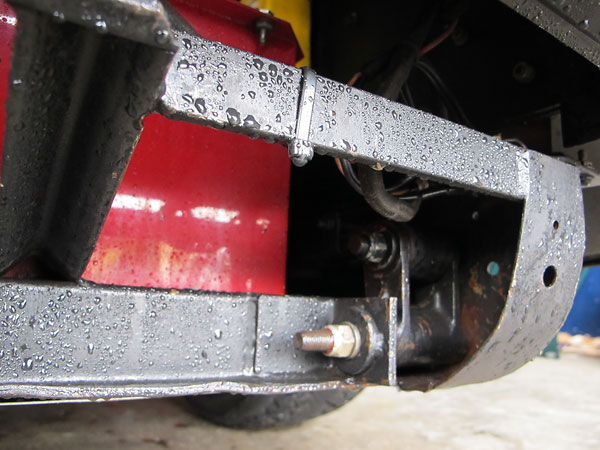
�
Beefy cast spring shackles.
�
�
Interior
��
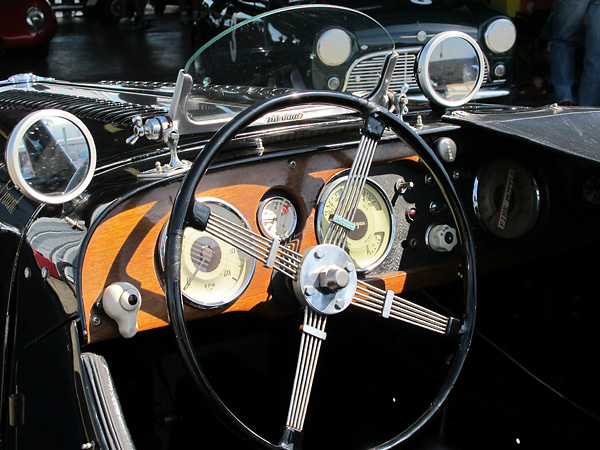
�
Blumel Brothers "Brooklands" four spoke, spring-type (aka "banjo") steering wheel.
�
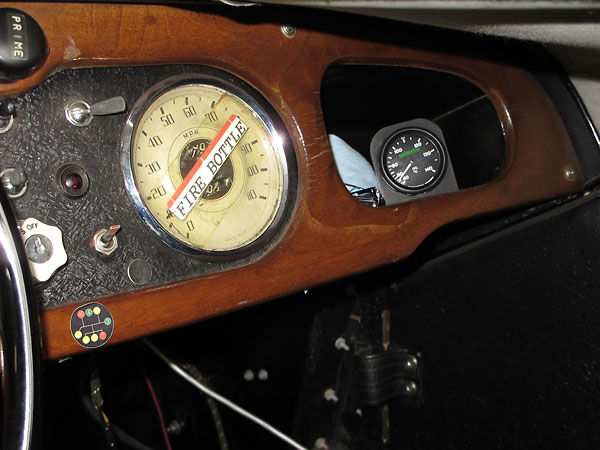
�
Racetech oil temperature gauge (40-140C).
�
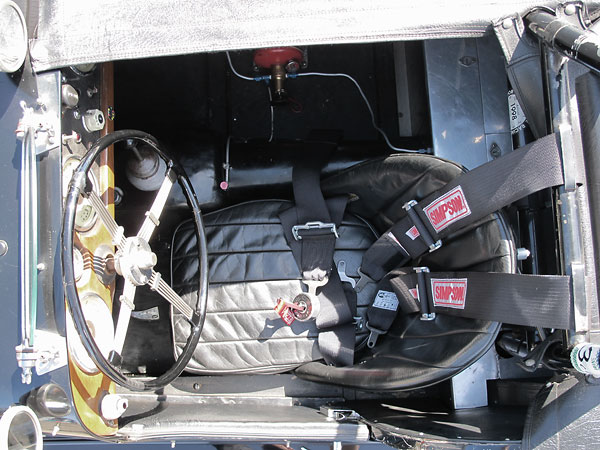
�
Simpson five-point cam-lock safety harness.
�
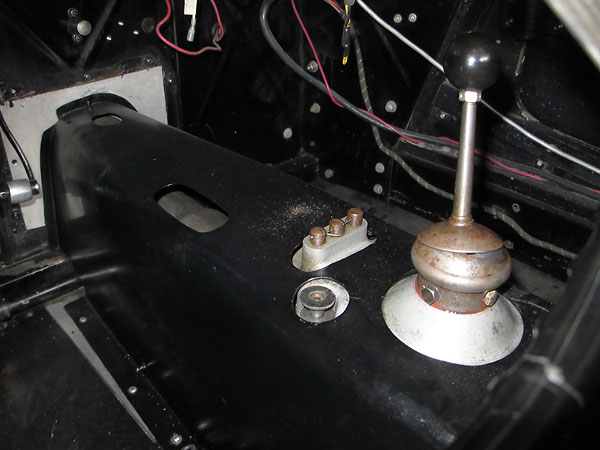
�
Stock Moss 4-speed transmission. The Moss gearbox is unusual in that it's mounted remotely. In other words,
�
there's a tubular member between bellhousing and gearbox with a high speed driveshaft spinning within it.
�
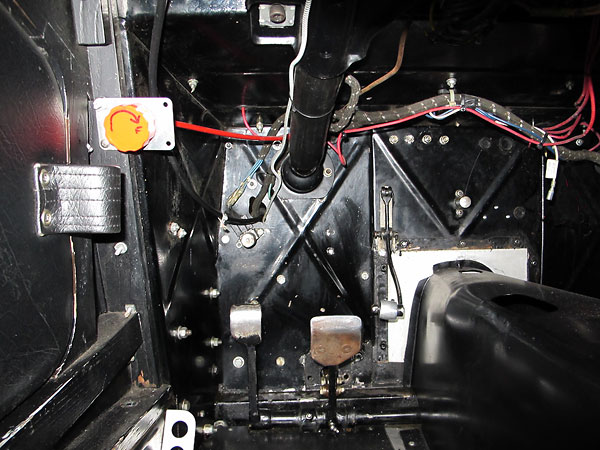
�
The large red knob is for adjusting front-to-rear brake bias.
�
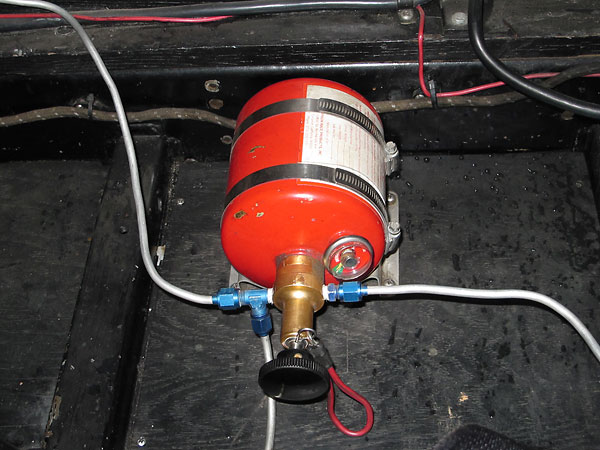
�
Simpson Race Products centralized fire suppression system.
�
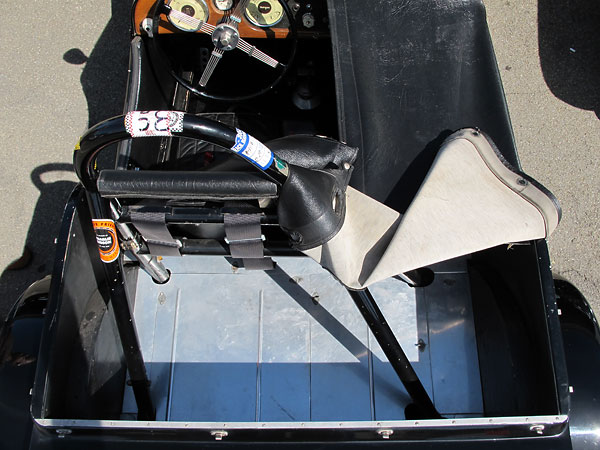
�
The rollhoop and its braces are required for safe racing.
�
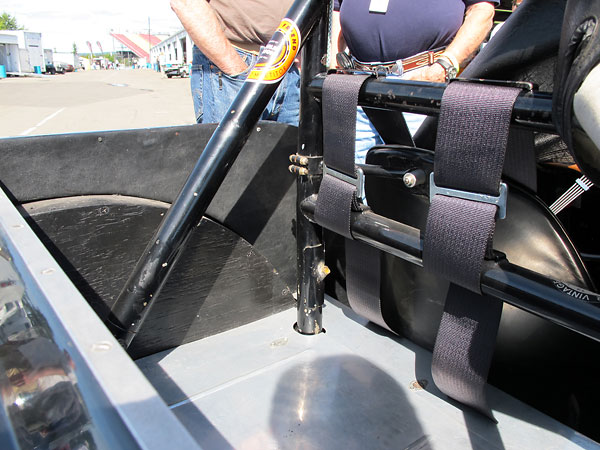
�
Shoulder straps are mounted close to shoulder height, so the driver's spine isn't compressed as he moves forward.
�
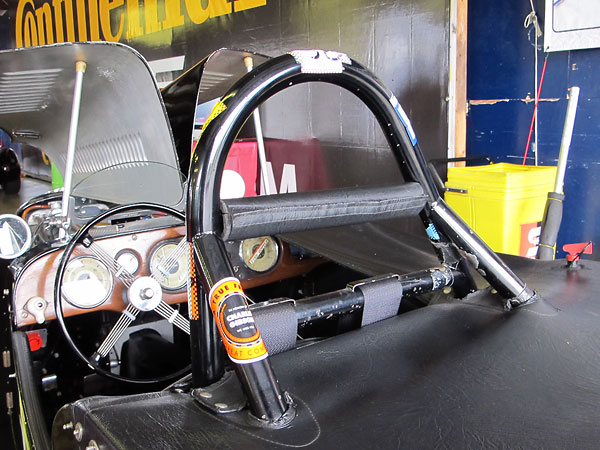
�
A neat custom-fitted tonneau cover smoothes airflow over the cockpit, and protects it from the elements.
�
�
�
Exterior
��
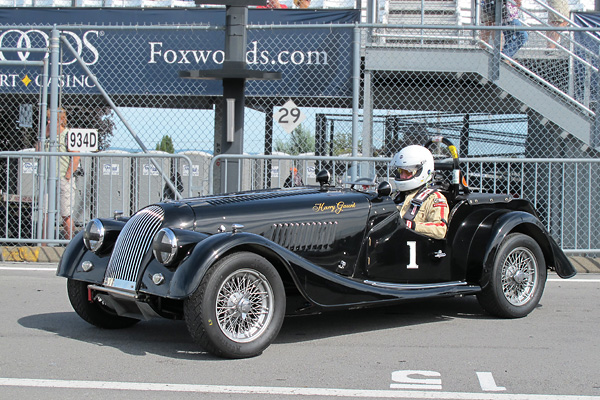
�
Harry Gaunt and his Morgan Plus 4 at Glenora Winery's 2010 Vintage Grand Prix of Watkins Glen.
�
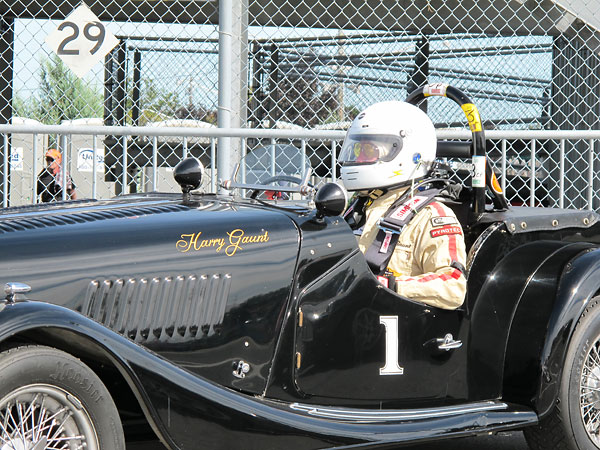
�
Despite a damp weekend, we enjoyed seeing Harry and the Morgan producing lap times of approximately
�
2 minutes, 30.5 seconds. That's an average speed of 81.31 mph over the challenging 3.4 mile circuit.
�
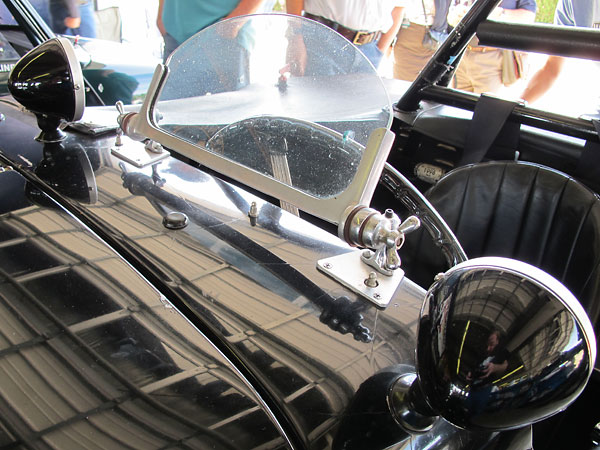
�
Aero Screen
�
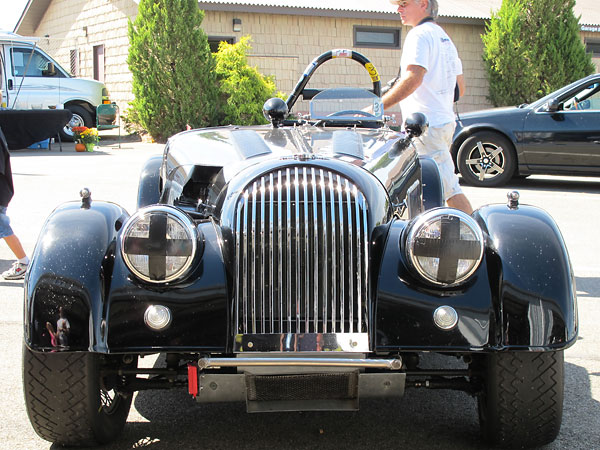
�
Morgan enthusiasts refer to this as a "cowled radiator". It was the third front end design offered
�
on the Plus 4 model. The earliest cars had flat radiators, with headlamps mounted on a horizontal bar.
�
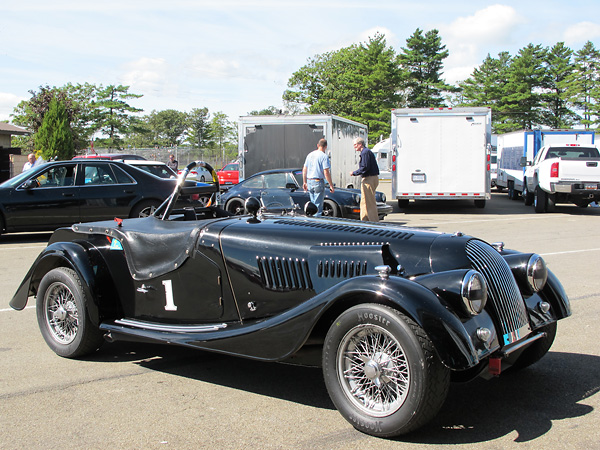
�
This particular Morgan came with a front bumper, but it's been removed for racing.
�
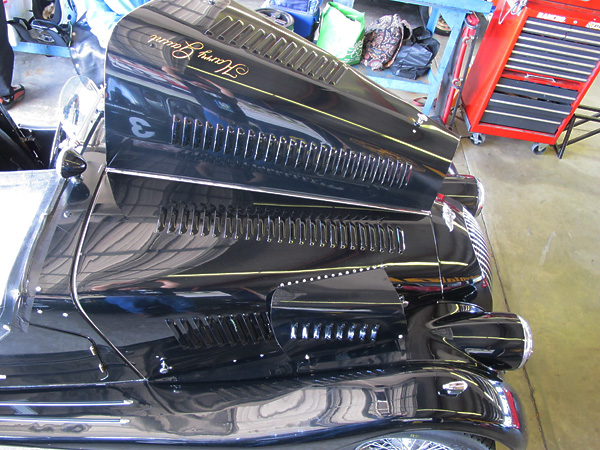
�
So many louvers!
�
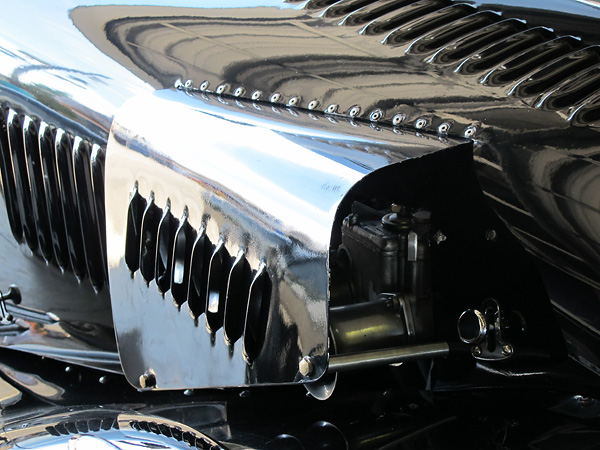
�
Weber carburetors wouldn't fit under the orignal bonnet contours...
�
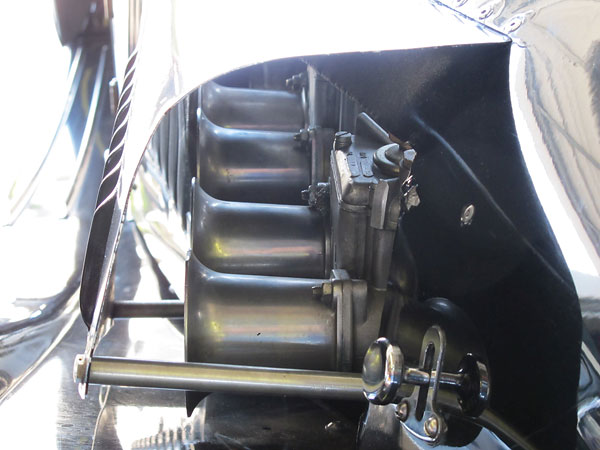
�
This neat and functional shield keeps things looking tidy.
�
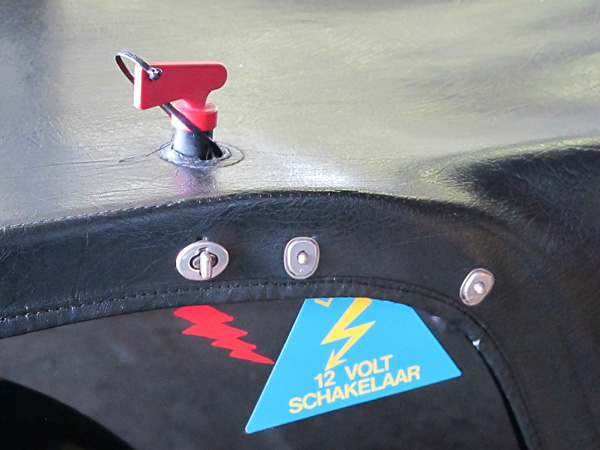
�
12 volt schakelaar. (That's Dutch for "switch".)
�
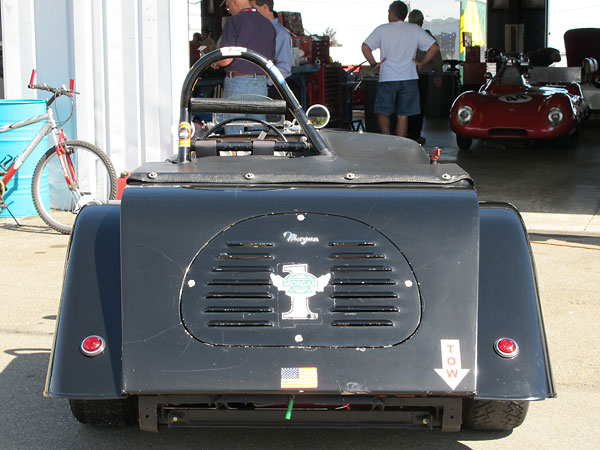
�
If this Morgan Plus 4 were street-driven, you might expect to see a pair of spare tires mounted here,
�
instead of the flat cargo compartment cover.
�
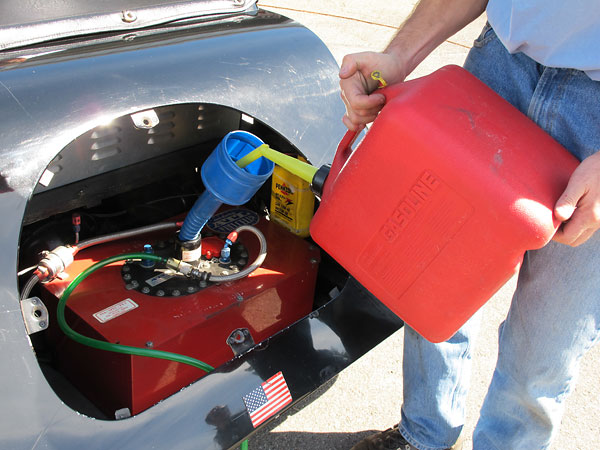
�
Removal of the cover facilitates refueling.
�
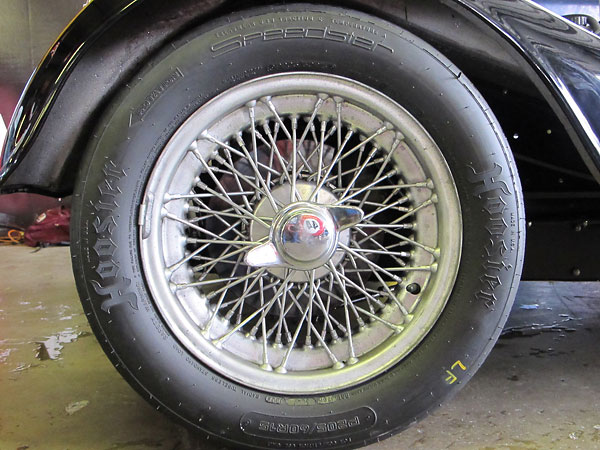
�
15x5.50 72-spoke wheels are a retrograde modification. TR2-engined Morgan Plus 4s came standard with
�
Dunlop 16x5.25 pressed steel disc wheels, mounted on four lugs each. Later model Morgan's used spoke
�
wheels mounted on spline-drive hubs. (Customers evidently preferred the old-fashioned appearance.)
�
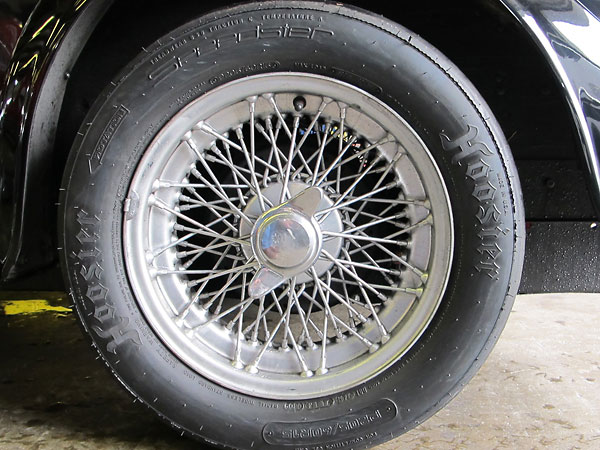
�
Dunlop Racing "Sportster" (205/60R15) tires.
�
�
�
All photos shown here are from September 2010 when we viewed the car at Glenora Winery's Vintage Grand Prix�
of Watkins Glen, New York. Photos by Curtis Jacobson for BritishRaceCar.com, copyright 2010. All rights reserved.
�
| If you liked this article, you'll probably also enjoy these: | �|||||
 | �
Carlton Shriver '38 Morgan 4-4 | �
 | �
Dan Leonard '49 MG TC Special | �
 | �
Mark Rosenberg '59 Peerless GT | �
| You're invited to discuss anything you've seen here on The British Racecar Motorsports Forum! | �|||||
�
Notice: all the articles and almost all the photos on BritishRacecar.com are by Curtis Jacobson.
�
(Photos that aren't by Curtis are explicitly credited.) Reproduction without prior written permission is prohibited.
�
Contact us to purchase images or reproduction permission. Higher resolution images are optionally available.
�

 �
�